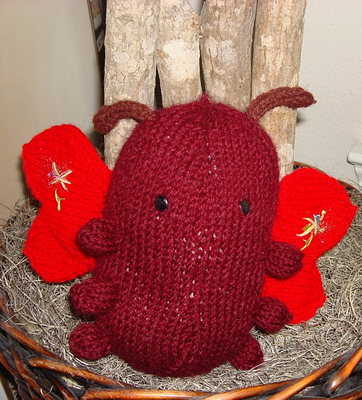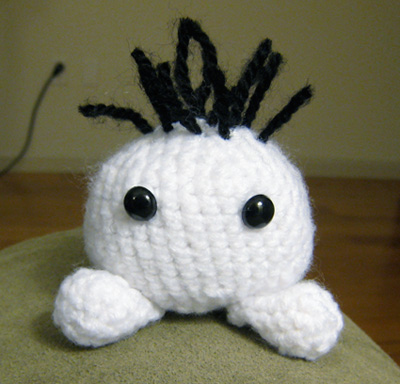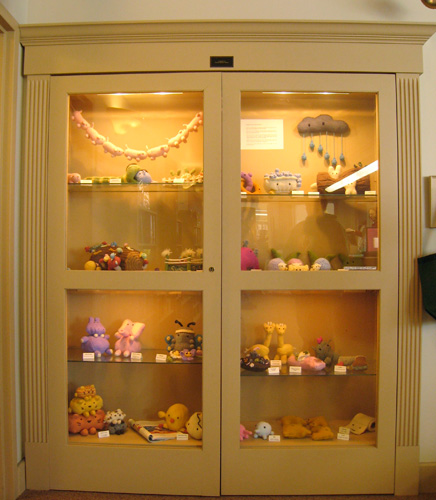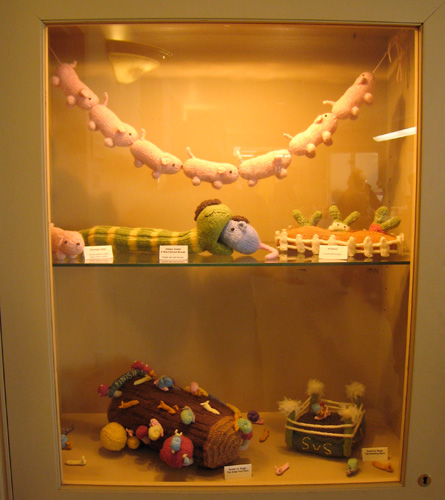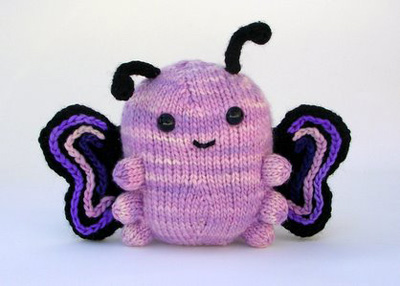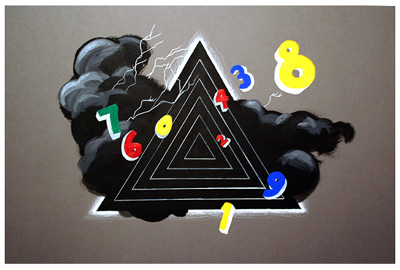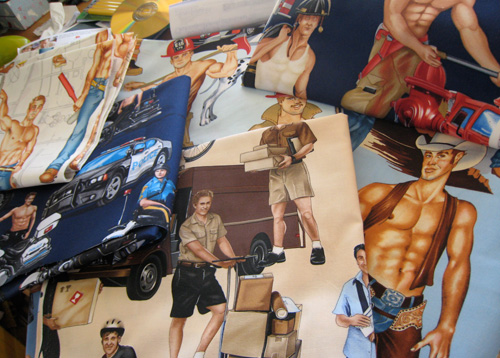I recently received a sweet email from a girl named Anla, who has been knitting for four years and is now “almost 12.” That’s an awesomely young knitter!
Anla’s been knitting some Mochimochi Land patterns in her free time, and she recently finished her version of Butterfull, whom she named JellyBean!
This chubby butterfly is sticking to hanging out with trees, so nobody gets hurt that way.
Anla tells me that she used yarn from an old sweater to knit JellyBean’s body, which is a great way to reuse. And instead of using duplicate stitch to embellish JellyBean’s wings, Anla embroidered some sparkly flowers with eyelash yarn. Very creative!
Next, Anla’s going to make some Sausage Dogs. I can’t wait! It’s so cool to hear from such a talented young knitter. Keep it up, Anla!

